How to connect a phone to a TV: ten popular connection methods
Do you like interesting, beautiful content? Surely you have noticed that on a large TV screen it is doubly pleasant to admire photos from your vacation, films with unusual visual effects - this is how the smallest details are visible. And a large group of friends will not be crowded in front of a small monitor. Do you agree?
But you don't know how to connect your phone to the TV and which connection option to choose? In this article, we have collected the 10 best ways to connect via cable and wirelessly. Their strengths and weaknesses were indicated. They provided visual photos and detailed video recommendations.
Among all the methods, in any case, there will be one that is suitable for you. You can familiarize yourself with the rest and remember them in the future.
The content of the article:
Options for connecting your phone to your TV
In most cases, connecting a mobile phone is not a problem, because modern models are smartphones running Android or Apple iOS. Difficulties arise due to the phone's incompatibility with available cables or the TV's operating system.
The key point is to choose the type of connection: wired or wireless. In the first case, problems arise with data reading and compatibility. In the second - with compatibility, as well as with the speed and smoothness of information transfer.
Each method should be considered separately. The options at hand may or may not work now, but the best method should be chosen for the future, and this may require new technology.
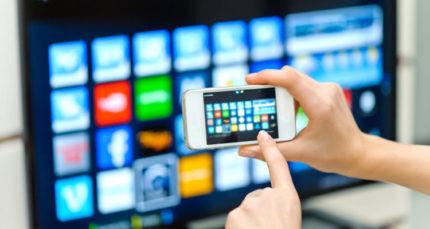
HDMI ports serve the function of a connecting link well. Older phones with slow Wi-Fi often have a micro-port for HDMI. Now Micro HDMI on phones is a rarity, and a full-size one, in principle, could never “end up” there.
Wireless interfaces work well on new phones and Smart TVs. The demand for high-quality wireless communications is constantly growing, as is the demand for good content captured on a phone camera.
No. 1: HDMI and Micro HDMI
A classic option with many advantages. When connected via HDMI, the picture on the TV will completely match the one on the phone, if the latter supports its output.
Smartphones of recent years traditionally do not have Micro HDMI, so you will need an adapter with an HDMI connector on the TV side and USB-C, Micro USB or Lighting on the phone side. Whenever you purchase such equipment, you should look for combined 3-in-1 adapters, etc., so that they are useful for other cases. Adapters usually run on power and discharge fairly quickly.
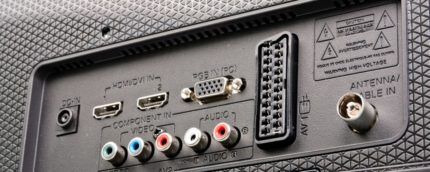
Follow this procedure:
- Find an HDMI cable or adapter that is compatible with your phone.
- Connect the TV and smartphone with a cable and, if necessary, an adapter on the smartphone side.
- Select HDMI source on your TV.
- If the picture does not appear automatically, change the display resolution settings on your phone.
- Change these settings until it appears.
Micro HDMI is a good interface for receiving high-definition multimedia. Does not require additional nutrition. Mixes and matches with regular HDMI, cables can be combined.
If your TV doesn't have an HDMI jack, you can connect to it using something like Display-Port or MiniDisplay-Port. If necessary, use devices with a transition from Display-Port to HDMI.
No. 2: Connection via USB port
A proven method, convenient and versatile, with sufficient flexibility and wiggle room. In rare cases, the TV and phone may not be compatible to work via USB on one side or the other.
Follow these steps:
- Connect your smartphone to your TV using a USB cable.
- On the TV, select the source USB port.
- Allow the connection on your phone if prompted.
- Use the remote control to move between the icons that appear on the TV screen.
A smartphone can be turned into a kind of “media player” if you use an adapter cable from USB to HDMI. Instead of an adapter, you can also use a USB to HDMI adapter with an HDMI cord.
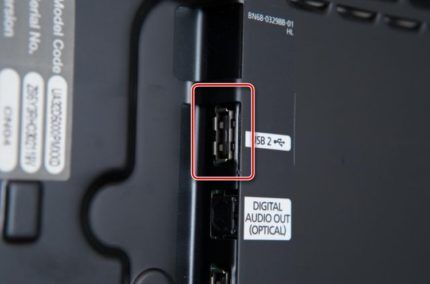
After connecting the phone to the TV, select “Use as a media device” in the first menu. Then find on the TV the picture source on the HDMI port to which the phone is connected.
Control the image on your TV screen from your phone.At the same time, the “Use as removable storage” function will remain available. It is activated when outputting from the phone to the USB connector of the TV.
Owners of Android smartphones can take advantage of additional equipment. Check out the xBounds graphics adapter. It supports wireless and wired communications and acts as a “bridge” between the TV and Android device. Works with HDMI, USB and various wireless interfaces, including Wi-Fi. Maximizes the quality of the output image.
It is worth noting the auxiliary USB interface: modern flagship Android phones have a USB Type-C connector, which allows you to connect them via an adapter with a corresponding plug. On the TV side there may be an HDMI, DVI, Display Port, VGA or miniDP plug.
Universal cables for different plugs will be just right, but they usually look like a lock block. At the same time, it’s worth looking for connectors for projectors and monitors.
No. 3: Connect using MHL
Smartphones based on the MTK processor provide connectivity via MHL. With it, you can transfer video using the Micro USB charging connector or data sharing port. You will need an MHL adapter. The adapter itself requires power from a 5V cable, which causes the phone itself to quickly drain.
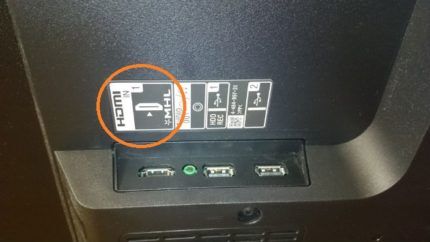
Samsung's flagship models up to Galaxy 5 support MHL, which allows you to watch videos normally even at 2160p (4K) quality. At the same time, with this connection option, significant interference occurs when watching high-quality video.
An MHL cable is a good synchronizer between a smart TV and a smartphone/tablet. Includes HDMI and USB functionality. Thus, you can simultaneously transmit high-quality video and sound and charge your phone.
The connection method is as convenient as possible: the HDMI output on the TV side is connected by a cable to the MHL output on the phone. However, a large number of electronic equipment does not support MHL, which itself will not work with many TVs.
Such cables are also produced by Samsung - as a separate device or as an addition to other products. MHL from Samsung has additional contacts for 11 pins, although there are usually 5 of them. There is no convenience in this regard, because you will need an adapter if the number of pins on the devices is not the same.
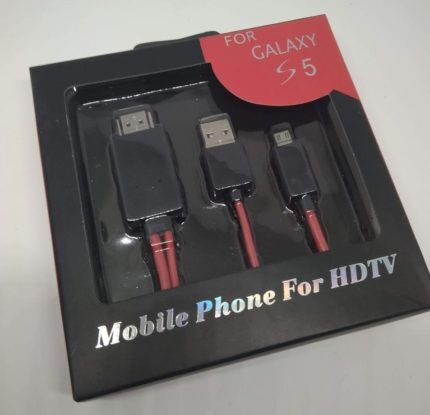
To work with high-quality video streams at 2160p (4K), you should purchase MHL 3.0. These cables are compatible with 30Hz and Dolby TrueHD high quality audio - for DTS-HD and 7.1. A 10 W charger is included with the cable.
#4: Using SlimPort
Slimport is an adapter with cables of different configurations. Its functions resemble MHL technology: it supports UltraHD and 4K, 7.1 multichannel sound. Connects to devices via HDMI, Display-Port or USB. You can connect additional devices to the USB adapter.
MHL technology was implemented mainly on Samsung and LG smartphones. Thanks to it, the image on the TV is higher quality, since data transmission occurs without decoding. We are talking about the stability of the picture.The Micro USB to HDMI adapter works without power, and the smartphone is charged through the adapter itself. It will be convenient to watch TV series and complete long missions in games with SlimPort.
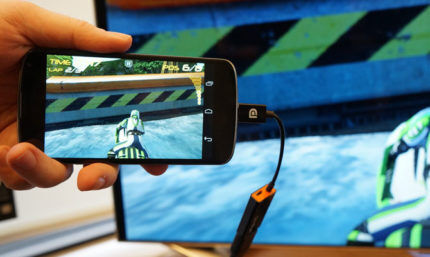
At the same time, the maximum available resolution for viewing video content is sometimes limited to 1080p. The main disadvantage of the connection is that sometimes the signal disappears and extraneous noise occurs. Check the cable and adapter for damage, and then such problems will not arise.
#5: Lighting Digital AV Adapter for Apple
This is an option for Apple products. Lighting Digital AV Adapter is a 2-in-1 device - a cable combined with an adapter. It successfully syncs iPhone/iPad with any device that has an HDMI connector.
Apple devices can be connected to TVs, monitors and projectors, and the picture from the phone will be broadcast in full. With Lighting, the user can not only view files and pictures from the smartphone screen, but also surf the web.
You will need another intermediate adapter between the Lighting device adapter and the TV - for the Lighting socket or 30-pin connector. The adapter for the first, newer connector does not transmit the image directly, but converts a low-quality image into a higher quality one. At the same time, artifacts appear on video and photo content.
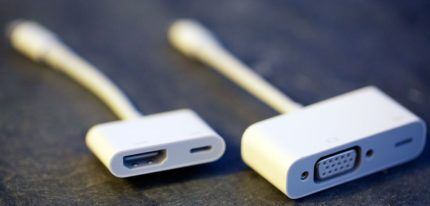
The method is suitable for owners of smartphones and tablets from Apple.
#6: Wireless transmission via Wi-Fi
At one time, the developers focused on wireless communications. The inconvenience is that very good TVs without Smart-TV functionality do not support such a connection or have a weak signal. In this case, playback directly from a smartphone is definitely out of the question.
Smart TVs have special wireless adapters that allow you to play not only the video stream, but also display the entire phone display. To connect, you will need to use a router and create a network of interacting devices. In this mode, the TV sees the phone as a multimedia device, and not just a storage medium.
In practice, a connection via Wi-Fi Direct is often required. This connection is supported by all Smart TVs with a Wi-Fi module. The devices interact directly. On your TV, click Share, and on your smartphone, activate Wi-Fi Direct mode. The disadvantage of this method is its low speed. You won't be able to watch the video, at least not in a quality higher than low. Large photos will take a long time to load. Media files can be sent by clicking “Send” in the options.
In the case of Wi-Fi Direct, you do not need a router, but the access point is the TV.
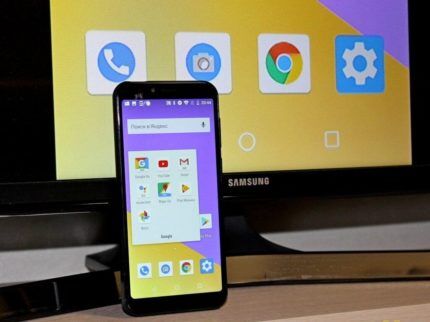
To connect Wi-Fi Direct, do the following:
- Enable Wi-Fi Direct on your TV in the settings. Usually it is located in the path “Wireless Networks” - “Wi-Fi” - “Wi-Fi Direct”.
- The phone will begin scanning devices.
- Select your TV from among them.
- Use the Send command in the options.
Wi-Fi Direct is a good method for Android phones up to version 3 inclusive and iPhones up to 4s, since they do not work with modern Wi-Fi modules.
No. 7: Connection via DLNA
DLNA is a set of data exchange standards. One of the classic and convenient options, and it will suit owners of Android devices.
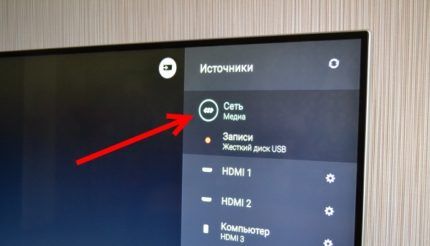
To work via DLNA follow the steps:
- Connect your TV and smartphone to your home network. The access point is the router, and the phone and TV are already connected to it. Moreover, if you have a cable to connect to the router, you can use it.
- Check if your smartphone and TV are on the same network.
- Go to your TV settings and turn on DLNA.
- Open File Explorer or Gallery on your smartphone.
- On a specific file, click options and select a player with the same name as the TV.
- Broadcasts from other programs on the phone and various settings will become available after installing BubbleUPnP.
The vast majority of smart TVs support this connection. The resolution of videos and images depends on the TVs themselves: HD or Full HD. With DLNA it is impossible to watch the entire content of the phone, but only video, photo and music files. The smartphone and TV must be connected via a network connection and support this technology.

DLNA is “hidden” under different names on manufacturers’ devices:
- Samsung - AllShare;
- Sony - VAIO Media Player;
- LG - SMART SHARE.
On an HTC phone, for example, the data transfer process will look like this: to start playing a file on the TV, you need to open the gallery, select the desired file, click “More” and select the player that corresponds to the target Smart TV. If after this the file does not appear on the TV screen, then you need to install additional software with the same name as DLNA or the name under which this technology is available from a specific manufacturer.
#8: Stream media via Chromecast
Google has developed streaming flash drives Chromecast and Chromecast 2, which work wirelessly with a smartphone and connect to a TV via USB. These flash drives are essentially media players, and they expand the functionality of a regular or smart TV.
Connection sequence to the TV:
- Connect the receiver to HDMI on your TV.
- On the other side, connect the Chromecast to the mains: directly or via a USB adapter.
- Install the Chromecast app on your smartphone.
- Enter the code that will appear after installation.
- Allow wireless network access.
- Launch a file in an application compatible with your TV.
- Go to the list of devices and click on Chromecast.
- Now the phone is a player displayed on the TV screen.
Additionally, install the Google Home smartphone app on iOS or Android. Work with the settings in this program through your Google account.

On Smart TV, interfaces like Chromecast show good interaction speed, but this can be difficult in other cases.
No. 9: Transfer via Apple TV
The most convenient option for owners of iOS mobile devices who want to watch their content on TV. Apple TV and Apple TV 4K are set-top players that run on AirPlay, which, in turn, is a function of the Apple TV program. The AirPlay section organizes viewing of visual content.
Owners of the Apple TV app and Apple TV 4K set-top box will not have any problems or errors. This media player synchronizes all Apple devices if at a particular moment they are connected to the same wireless network.
The image quality is as high as possible both in terms of expansion and content. You can count on 1080p without glitches. The downside is a delay of up to half a second, which will not allow you to play online or action games normally.
Follow these steps:
- Connect your iPhone and Smart TV to the same network.
- Open Control Center and tap Screen Repeat.
- From the list that appears, select Apple TV.
Users have a Video Replay option that allows them to save the video to the TV they are playing on. Apple TV works with almost all Smart TVs.
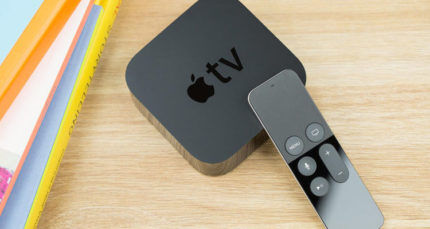
If the Smart TV is new, and the phone is represented by the Apple brand, then all actions are performed quickly, almost in 1 click. In this case, the image size on the external source will have to be adjusted.
Apple TV 4K will be a convenient option for fans of all kinds of games, but still it will not be universal. The AirPlay app lets you create presentations and play games directly from your phone.
#10: Connect using Miracast
Miracast is a wireless connection based on Wireless Display. Compatible with Android 4.2 and above, Windows Phone 8.1 and above. Miracast supports most Smart TVs. The technology is based on Wi-Fi, but if there is no Wi-Fi receiver on the TV, an adapter connected to the HDMI port will perform this function.
Connecting via Miracast - procedure for a smart TV:
- Activate Miracast in your network settings.
- On your smartphone, find the “Screen” item and then “Wireless Monitor”.
- Activate the Miracast feature.
- Among the detected Miracast devices, select your TV.
- The picture will immediately appear on the TV, and if this does not happen, then repeat the entire cycle.
There are TVs with built-in Miracast. The user can only enable this feature in the TV settings, click “Wireless Monitor” on the phone and select the TV from the list.
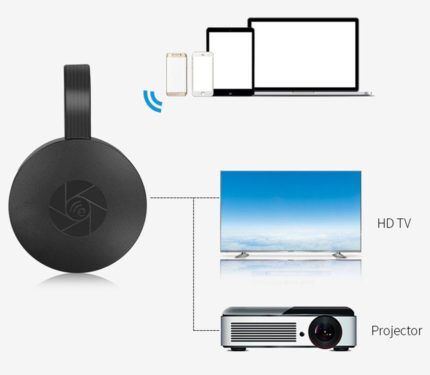
Procedure for other TVs with multimedia support:
- Buy an adapter, ideally multifunctional with support for Miracast, AirPlay and Chromecast.
- Insert the adapter into the HDMI socket on the TV and turn on the power via USB last to avoid rapid discharge.
- Open “Display” and “Wireless Monitor” on your phone and turn on Miracast, another option is to connect through the Miracast app.
The Miracast option is similar in meaning to AirPlay, but is inferior in speed - the delay reaches 1 second.In the case of live broadcasts, everything will be even slower. There is no point in using Miracast to stream from a mobile phone. The image quality is worse than AirPlay.
You should not use Miracast for 4K if such high quality without any correction is important.
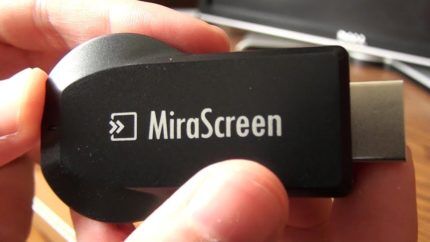
As for sound, multi-channel Dolby ACR 5.1 is supported.
The problem with Miracast is that it is incompatible with some Smart TVs and smartphones.
What's the best way?
If you can connect to HDMI, then there is no need to look for alternatives. These are both wide possibilities and high quality. Second place should be given to wireless connection methods for devices running the same OS or OS from the same manufacturer.
The option with Wi-Fi Direct is considered categorically inconvenient, although in some situations it is ideal. For example, if you need to view several files and the whole process takes a little time. The USB method, even if it fails, remains very accessible due to its prevalence, because almost every adapter has a USB connector. The MHL method has the most compatibility problems.
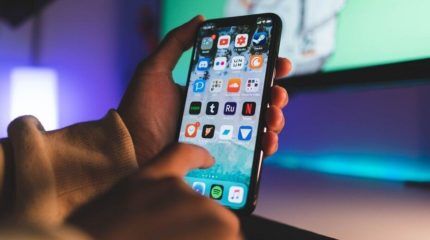
Owners of Android phones and Smart TV will enjoy Miracast. For a regular TV, buy an additional Chromecast.
Owners of Apple smartphones will benefit from a combination of the Apple TV 4K media player along with Lighting and Miracast adapters. In most cases, you will need different adapters to connect your phone to your TV.Buy these every chance you get.
By the way, Smart TVs can become part of a smart home. What is it and how to equip it, read in this article.
In addition to smart TVs, there are others smart devices for homedesigned to make your life more comfortable and simpler.
Conclusions and useful video on the topic
Connect using YouTube app and wireless network, step by step connecting Android device:
TV with easy connection for iPhone:
How to connect a phone via a Miracast adapter - a brief overview of the device:
You can usually connect your phone to the TV the first or second time. There are many ways to do this. It’s worth focusing on proven options, but you also need to pay attention to newer technologies aimed at fully perceiving modern content.
The latest games have many components for which a perfect picture is fundamentally important. You can watch old content even with an unstable connection. Go wireless if you like convenience and compactness.
Ask questions, share valuable information with other readers. For this purpose, there is a feedback form located under the article. Tell us what connection methods you personally used and whether you were satisfied with the playback quality.



